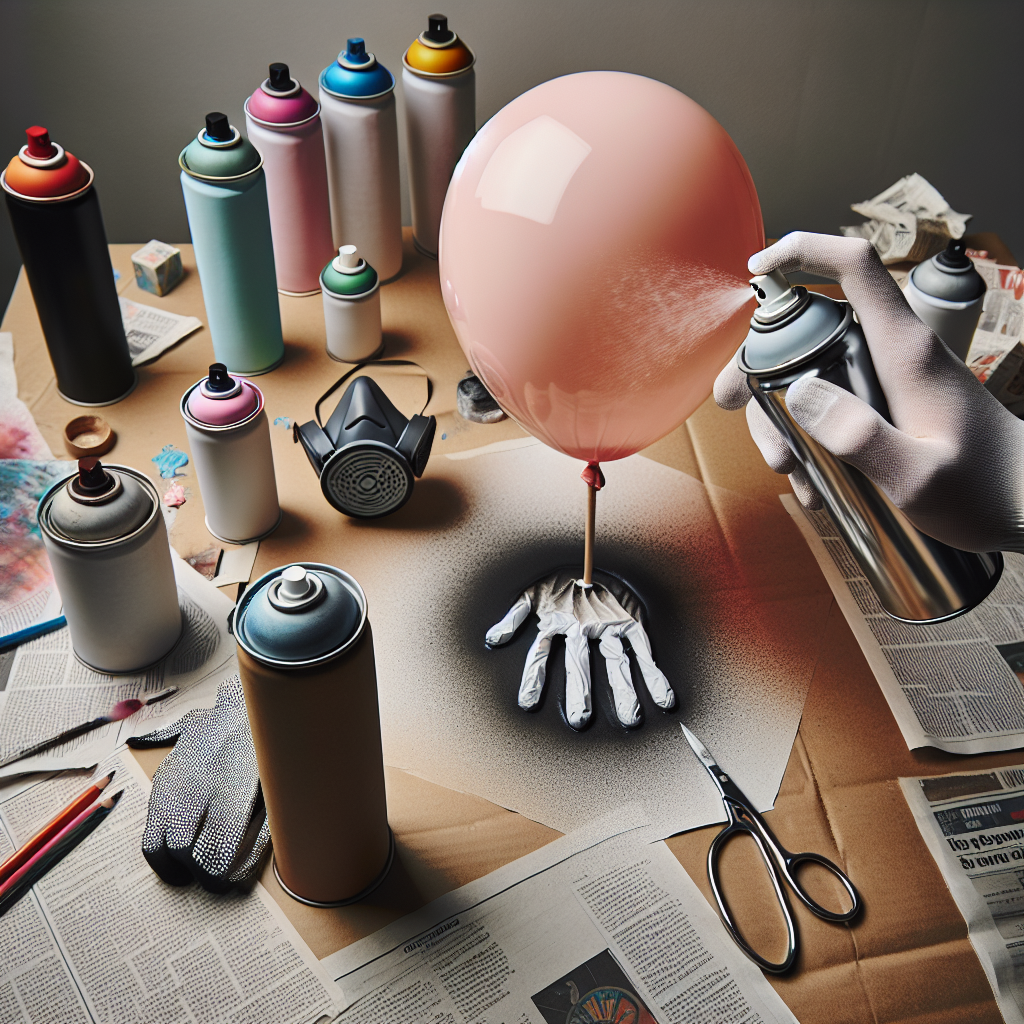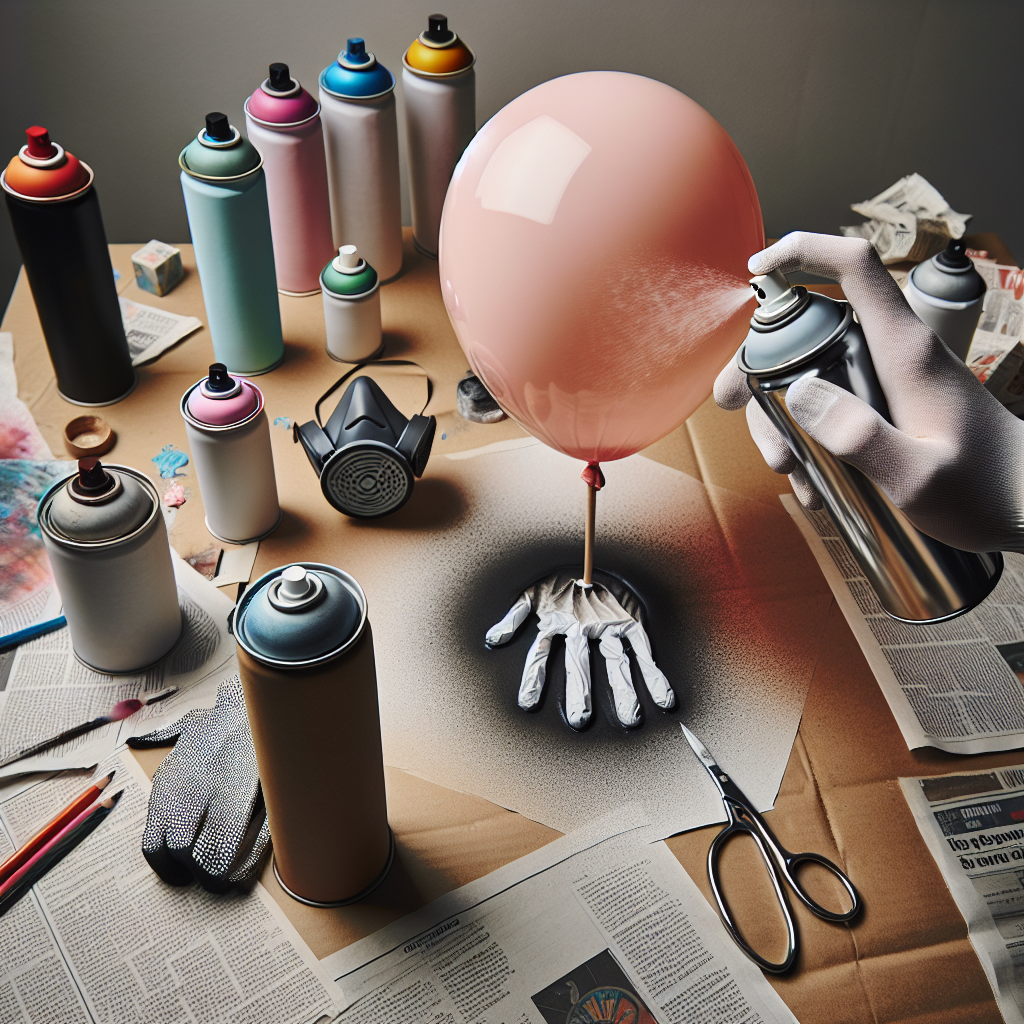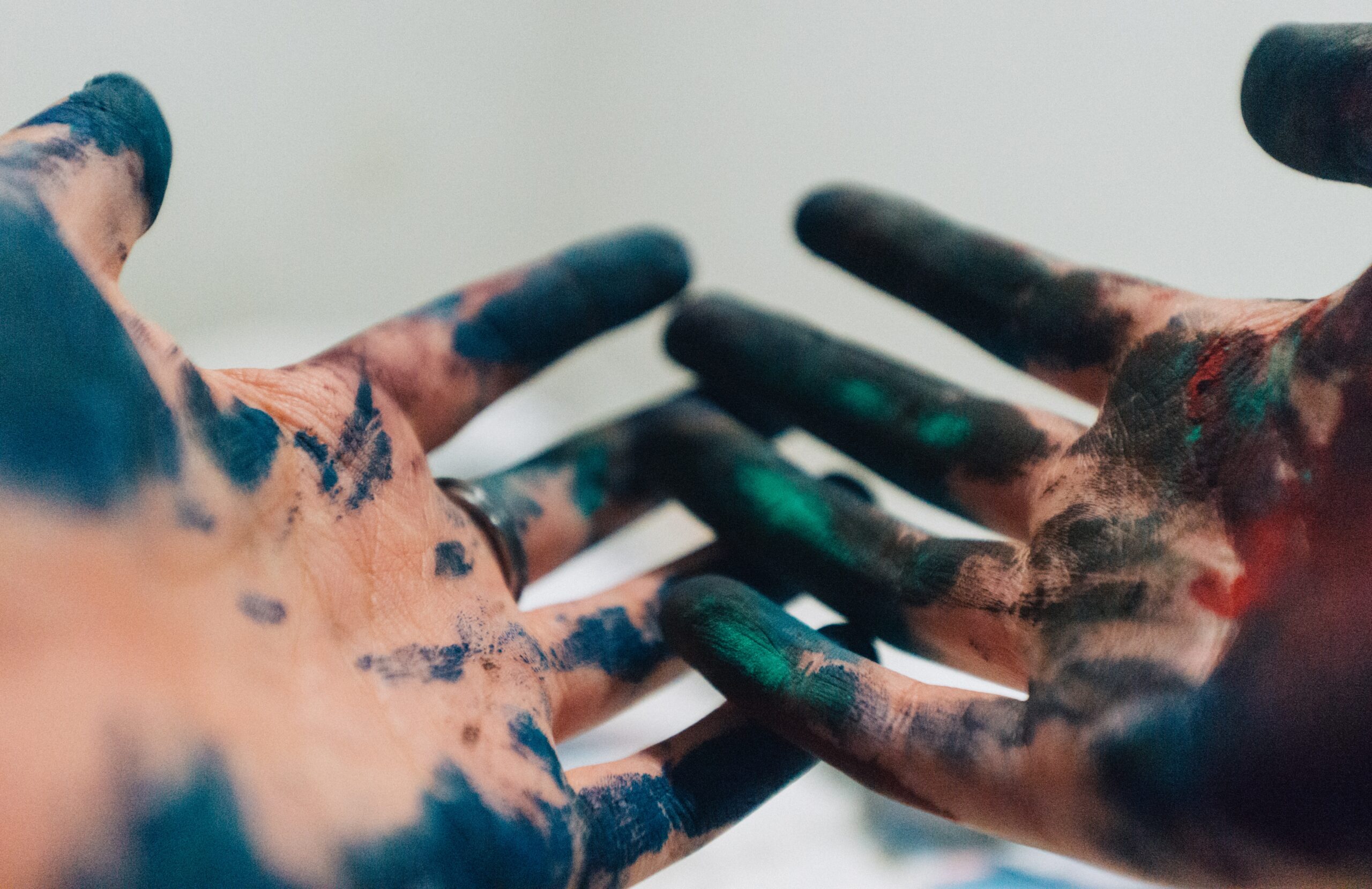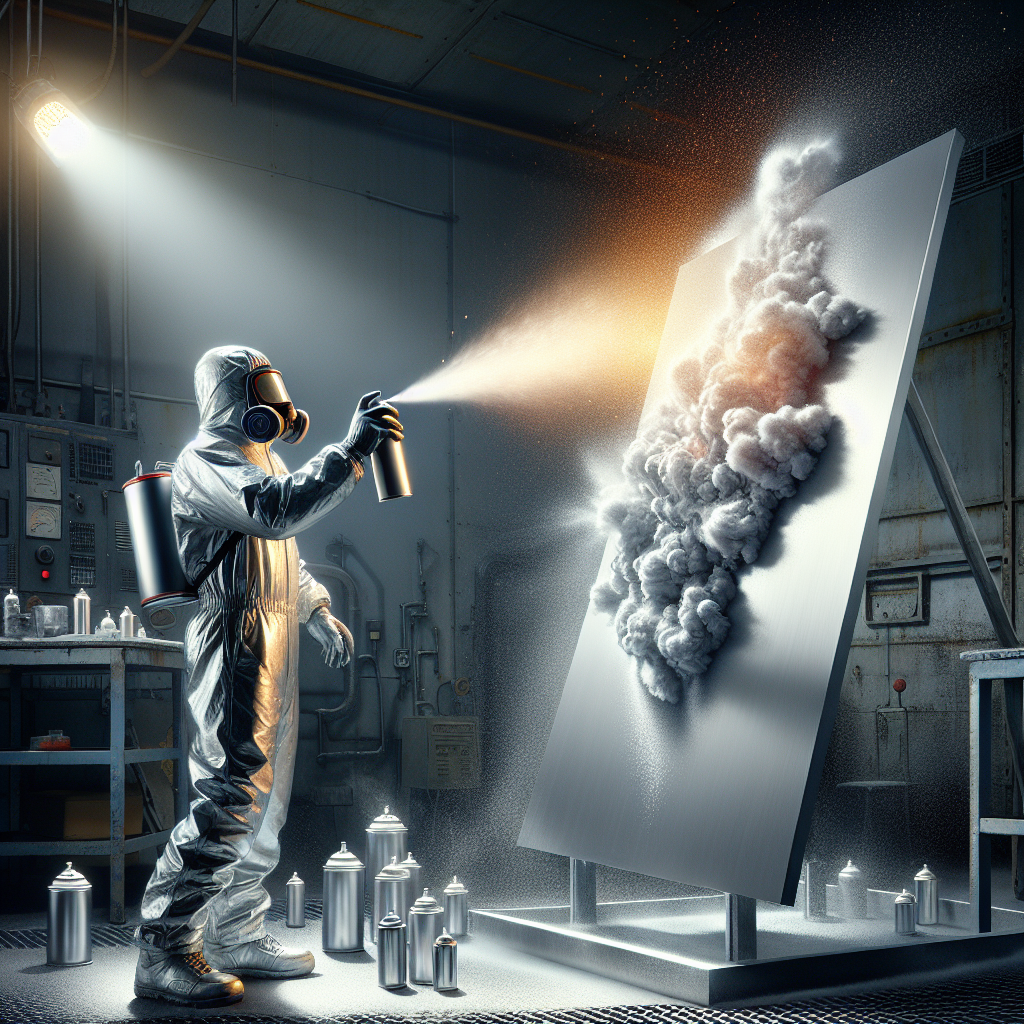Spray painting is a popular technique used to add color and creativity to various surfaces. However, when it comes to latex balloons, one might wonder if they can also be given a fresh coat of paint. In this article, we will explore the possibilities and limitations of spray painting a latex balloon, delving into the factors that may affect the outcome and considering alternative methods to achieve the desired aesthetic while ensuring the balloon’s structural integrity. So, before you grab that can of spray paint, let’s examine whether or not it is feasible to spray paint a latex balloon.

This image is property of images.unsplash.com.
Understanding Latex Balloons
Latex balloons are made from natural latex rubber, which is derived from the sap of a rubber tree. These balloons are popular for various occasions and events due to their vibrant colors, affordability, and versatility. Latex balloons have been a staple in the party decoration industry for many years due to their ability to be easily inflated and their wide range of available sizes and shapes.
Defining Latex Balloons
Latex balloons are made by dipping a mold into liquid latex rubber and letting it dry. The resulting balloon is stretchy and can be filled with air or helium. They are typically translucent and can be opaque or transparent, depending on the desired effect. Latex balloons can be easily inflated using a hand pump or a helium tank.
Common Uses of Latex Balloons
Latex balloons are widely used for various purposes such as parties, birthdays, weddings, and other celebrations. They are often used as decorations, either individually or in balloon bouquets, arches, or columns. Latex balloons can also be used for promotional purposes, advertising, or as tools for educational demonstrations.
Durability and Flexibility of Latex Balloons
Latex balloons are known for their durability and flexibility. They can withstand a considerable amount of handling and can be shaped and twisted without breaking. This flexibility makes them ideal for balloon artists who create intricate balloon sculptures. Additionally, latex balloons have decent longevity under the right conditions, retaining their shape and color for an extended period of time.
Basics of Spray Painting
Spray painting is a technique that involves using pressurized air to atomize paint particles and propel them onto a surface. It offers a fast and efficient way to cover large areas with a smooth and even coat of paint. Spray painting can be done using aerosol cans or specialized spray guns.
What is Spray Painting
Spray painting is a popular method used for various applications, including DIY projects, automotive refinishing, furniture restoration, and artistic creations. It allows for a faster application of paint compared to traditional brush or roller methods, resulting in a smooth and professional finish. Spray painting also enables precise control over the paint distribution, allowing for detailed work and intricate designs.
Materials and Tools Needed for Spray Painting
To begin with spray painting, you will need a few essential materials and tools. Firstly, you will need an appropriate spray paint. Other necessary items include a spray gun or aerosol can, a compressor (if using a spray gun), a suitable respirator or mask, protective clothing, gloves, sandpaper or a sanding block, a drop cloth or newspaper to protect the surrounding area, and a well-ventilated workspace.
General Procedure of Spray Painting
Before starting the spray painting process, it is crucial to prepare the surface to be painted. This involves cleaning it thoroughly, removing any dust or debris, and ensuring it is smooth and dry. Once the surface is prepared, apply a primer if necessary, and allow it to dry. Afterward, shake the spray paint can or mix the paint in the spray gun thoroughly. Hold the can or spray gun about 6 to 12 inches away from the surface and apply a thin, even coat of paint, moving the can or gun in a sweeping motion. Allow each coat to dry before applying additional layers if needed.
Compatibility of Spray Paint and Latex Balloons
Before deciding to spray paint a latex balloon, it is important to consider the compatibility between the two. There are several factors to consider, including chemical compatibility, texture, and adhesiveness.
Chemical Compatibility
It is crucial to ensure that the spray paint being used is chemically compatible with latex balloons. Certain paints may contain solvents or chemicals that can degrade or dissolve the latex material, causing the balloon to deflate or burst. It is recommended to check the manufacturer’s guidelines and choose a paint specifically labeled as suitable for use on balloons.

This image is property of images.unsplash.com.
Texture and Adhesiveness Considerations
Another important aspect to consider is the texture and adhesiveness of the spray paint. Balloons have a smooth and flexible surface, and the paint should adhere well without cracking or peeling when the balloon is inflated or manipulated. Some paints may have a rubber-like texture when dry, which can enhance the overall appearance and durability of the painted balloon.
Potential Issues or Complications
Spray painting latex balloons can present certain challenges. One potential issue is the risk of excessive weight from the additional paint affecting the balloon’s ability to float when filled with helium. Additionally, the inflation process can cause stress on the painted surface, potentially leading to cracking or peeling. It is important to carefully monitor the condition of the painted balloons and take necessary precautions to minimize any potential issues.
Selecting the Right Spray Paint for Latex Balloons
When choosing a spray paint for use on latex balloons, it is essential to consider the specific requirements and characteristics of the paint. Here are some factors to keep in mind:
Spray Paint Types and Their Features
There are various types of spray paints available in the market, each with its own unique features. Acrylic-based spray paints are a popular choice for latex balloons due to their flexibility and compatibility with the latex material. They provide a smooth and even coverage, are quick-drying, and offer a wide range of colors to choose from.
Choosing Spray Paint for Latex
When selecting a spray paint for latex balloons, opt for a product that is specifically formulated for use on latex materials. These paints often adhere well to latex, have good elasticity, and are less likely to crack or peel. It is advisable to read the product labels or consult with the manufacturer to ensure the paint is suitable for balloons.

This image is property of images.unsplash.com.
Where to Purchase Spray Paint
Spray paints suitable for use on latex balloons can be found at various retailers, including craft stores, hardware stores, and online marketplaces. It is recommended to check for availability and compare prices and product options before making a purchase. Additionally, it can be beneficial to read customer reviews and ratings to gauge the quality and performance of the paint.
Step by Step Guide to Spray Painting a Latex Balloon
If you have decided to spray paint a latex balloon, it is important to follow a step-by-step process to ensure successful results. Here are the recommended steps:
Preparation Steps: Setting up a Workspace, Cleaning the Balloon
- Choose a well-ventilated and protected workspace, preferably outdoors or in a well-ventilated room. Lay down a drop cloth or newspapers to protect the surrounding area from overspray.
- Before painting, ensure the balloon is clean and free from any dirt, dust, or oils. Gently wipe the surface of the balloon with a damp cloth or sponge and allow it to dry completely.
Procedure: How to Spray Paint the Balloon
- Shake the spray paint can or mix the paint in the spray gun thoroughly as per the manufacturer’s instructions.
- Hold the spray can or gun about 6 to 12 inches away from the balloon’s surface.
- Begin spraying in a sweeping motion, moving from top to bottom or left to right, ensuring an even and thin coat of paint.
- Allow the first coat to dry completely before applying subsequent layers if desired. Follow the recommended drying time provided by the paint manufacturer.
Tips and Best Practices
- Test the paint on a small, inconspicuous area of the balloon before proceeding to paint the entire surface.
- Apply thin coats of paint to avoid excessive weight and maximize the balloon’s flexibility.
- Use masking tape or stencils to create patterns or designs on the balloon if desired.
- Allow the painted balloon to dry completely before handling or inflating it.
Drying and Curing Process
After spray painting a latex balloon, it is important to understand the drying and curing process to ensure the best results.
Understanding the Curing Process of Paint on Latex
The curing process refers to the time it takes for the paint to fully bond and harden onto the surface. This process can vary depending on the type of paint and environmental conditions. Generally, acrylic-based spray paints typically dry within a few hours, but the complete curing process may take several days to a week.
Estimating the Drying Time
The drying time of the painted balloon can depend on various factors, including the type of paint, the number of coats applied, humidity levels, and temperature. It is important to refer to the paint manufacturer’s instructions to get an estimate of the drying time. It is recommended to allow ample time for the paint to dry completely before handling or inflating the balloon.

Speeding up the Drying Process
To speed up the drying process of the painted balloon, it is advisable to place it in a well-ventilated area with good airflow. Avoid exposing the balloon to direct sunlight or using artificial heat sources, as this can cause the paint to dry unevenly or crack. Patience is key, as rushing the drying process may lead to subpar results.
Common Mistakes and Problems When Spray Painting Latex Balloons
Despite following the correct procedures, there are certain common mistakes and problems that can occur when spray painting latex balloons. Here are some examples:
Common Mishaps and Their Solutions
- Paint runs or drips: To avoid paint runs or drips, maintain an appropriate distance between the spray can or gun and the balloon surface, ensuring an even and controlled spray motion.
- Uneven coverage: Apply thin and even coats of paint to achieve uniform coverage. Allow each coat to dry before applying additional layers if needed.
- Paint peeling or cracking: Ensure the balloon is clean and free from dirt or oils before painting. Use a paint specifically formulated for use on latex balloons and follow the recommended drying and curing times.
Mistakes to Avoid When Spray Painting Balloons
- Avoid rushing the drying process: Allow the paint to dry completely as per the manufacturer’s instructions to ensure optimal results.
- Don’t apply thick coats of paint: Applying thick coats of paint may cause excessive weight and affect the flexibility and overall appearance of the balloon.
- Don’t overlook proper ventilation: Make sure to work in a well-ventilated area to minimize exposure to paint fumes and ensure proper drying.
Troubleshooting Spray Painting Issues
- Paint not adhering well: If the paint is not adhering properly to the balloon surface, ensure it is clean and free from any dust or oils. Lightly sand the surface before applying a primer.
- Paint cracking or peeling: This issue can arise if the paint is not compatible with latex or if the balloon is being stretched or manipulated after the paint has dried. Ensure the paint is suitable for use on latex balloons and avoid excessive bending or handling of the painted balloon.

Effects of Spray Paint on Balloon Longevity and Floatation
Using spray paint on latex balloons can have certain effects on their longevity and floatation. It is important to understand and consider these factors when deciding to spray paint balloons.
Impact on the Lifespan of a Balloon
Spray painting a latex balloon may slightly diminish its overall lifespan. The additional layer of paint can impact the balloon’s ability to retain helium, causing it to deflate or float for a shorter duration. However, with proper care and maintenance, the painted balloon can still last for several days or more.
How Spray Paint Can Affect Floatation
The weight of the spray paint can affect the balloon’s ability to float when filled with helium. Heavier paint layers may cause the balloon to float for a shorter duration or not float at all. It is essential to consider the weight of the paint and ensure it does not exceed the balloon’s lifting capacity.
How to Minimize Any Negative Effects
To minimize the negative effects of spray painting on balloon longevity and floatation, consider the following:
- Use thin coats of paint to minimize added weight.
- Test the painted balloon’s floatability before using it for any important event.
- Avoid excessive handling or manipulation of the painted balloon to minimize stress on the paint layer.
- Take proper care and maintenance measures to prolong the life of the balloon (covered in the next section).
Cleaning and Maintenance of Spray Painted Latex Balloons
Proper cleaning and maintenance are essential to preserve the appearance and longevity of spray-painted latex balloons.
Cleaning Tips and Techniques
To clean a spray-painted latex balloon, follow these tips:
- Avoid using harsh chemicals or abrasive materials that may damage the paint or balloon.
- Gently wipe the balloon’s surface with a soft cloth or sponge dampened with mild soap and water.
- Allow the balloon to air dry or gently pat it dry with a soft towel.
Maintenance Recommendations for Best Results
To maintain the painted balloon’s appearance and prolong its lifespan, consider the following recommendations:
- Store the painted balloon in a cool, dry place away from direct sunlight, extreme temperatures, or humidity.
- Avoid exposing the balloon to sharp objects or rough surfaces that may puncture or damage the paint.
- Limit the amount of time the balloon is inflated to reduce stress on the paint layers.
- Handle the balloon with care to avoid excessive stretching or bending.
Storage Tips to Prolong Lifespan of Spray Painted Balloons
Proper storage is crucial to ensure the longevity of spray-painted latex balloons. Follow these tips for effective storage:
- Deflate the balloon completely after use by gently pressing or squeezing it.
- Store the deflated balloon in a plastic bag or container to protect it from dust, moisture, or any potential damage.
- Place the stored balloons in a cool, dry area, away from direct sunlight or extreme temperatures.
- Avoid storing heavy objects on top of the balloons, as this can cause deformation or damage.
Safety Tips and Environmental Impact
While engaging in spray painting activities and considering the environmental impact is of utmost importance. Here are some safety tips and thoughts on minimizing the environmental impact of spray painting:
Safety Considerations While Spray Painting
- Always work in a well-ventilated area to minimize inhalation of paint fumes. If working indoors, use exhaust fans or open windows to improve air circulation.
- Wear appropriate personal protective equipment, such as a respirator or mask, gloves, and protective clothing, to protect yourself from paint particles and fumes.
- Follow the manufacturer’s safety guidelines and instructions provided on the spray paint can or equipment.
- Keep spray paint cans away from open flames or sources of ignition, as they may be flammable.
Disposable Practices for Spray Paint Cans
Dispose of empty spray paint cans responsibly to minimize environmental impact. Consider the following practices:
- Check with local regulations regarding the proper disposal of empty spray paint cans. Some areas may have designated recycling or hazardous waste disposal facilities.
- Empty the cans completely by spraying into a waste container until no more paint comes out.
- Dispose of the empty cans in accordance with local regulations or guidelines provided by the manufacturer.
Environmental Impact of Spray Painting
Spray painting can have environmental consequences due to the release of volatile organic compounds (VOCs) into the atmosphere. To minimize the environmental impact:
- Choose low VOC or eco-friendly spray paint options when available.
- Opt for water-based spray paints instead of solvent-based ones if possible.
- Use spray paint sparingly and avoid excessive overspray or wastage.
- Consider using spray booths or containment systems to capture paint overspray and minimize air pollution.
In conclusion, spray painting latex balloons can be a creative and enjoyable activity, adding flair and personalization to any event or celebration. By understanding the compatibility between spray paint and latex balloons, choosing the right materials, following proper procedures, and taking necessary precautions, you can achieve beautiful and long-lasting results. Remember to prioritize safety, proper maintenance, and environmental considerations for a successful and responsible spray painting experience.



